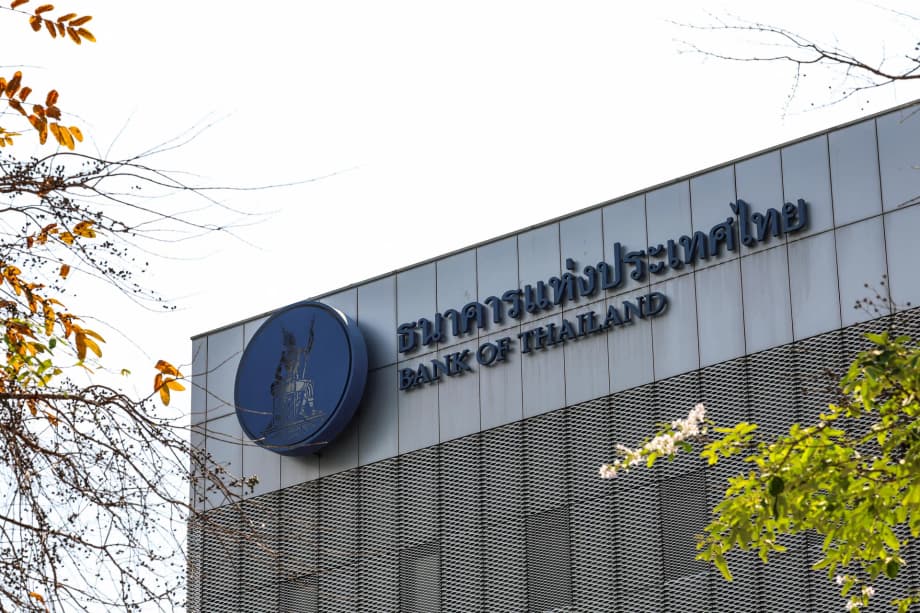Thailand edges ahead in Southeast Asia’s gold race
Thailand is Southeast Asia’s leader in official gold reserves, holding more than 230 tonnes according to mid 2025 tallies used by central banks. The stockpile has been built over roughly two decades as the country diversified its reserve mix away from currencies like the dollar and euro. The result is a larger buffer against swings in exchange rates and debt markets at a time when gold prices keep setting records. Thailand’s position places it ahead of regional financial centers and resource rich neighbors, and the ranking reflects deliberate policy as much as geology.
Gold reserves refer to bullion owned by a country’s monetary authority. These bars are part of official foreign exchange reserves, alongside cash and government bonds. Central banks hold them because gold is no one’s liability, it is highly liquid in crises, and it can reduce exposure to any single currency. Holdings are reported in metric tonnes and recorded with the International Monetary Fund. Storage can be domestic or overseas, usually in high security vaults, and changes are reported with a lag, which is why figures are commonly expressed as estimates for a given quarter.
On those measures, Thailand sits at about 234 tonnes. Singapore follows in the region with roughly 200 tonnes, while the Philippines holds near 130 tonnes. These levels shift over time as central banks buy or sell, and they can vary with halts in reporting or revisions. What stands out is that Thailand has consolidated a clear lead among Southeast Asian peers after a period of active accumulation in the early 2020s and steady additions in earlier years.
Why gold reserves matter in 2025
Gold has streaked to all time highs this year, trading between 3,400 and 4,000 dollars an ounce in recent weeks. The surge has lifted the market value of national hoards. The United States says the market value of its bars now exceeds 1 trillion dollars, far above the old statutory price used on its books. Central banks have been steady buyers for three straight years, together adding more than 1,000 tonnes annually. Surveys show most reserve managers expect purchases to continue. The metal has also grown as a share of global reserves, with some estimates placing gold at about one fifth, above the euro.
This backdrop matters for Southeast Asia. China’s central bank has been adding to its hoard month after month while encouraging partners to store bullion within its trading system. The strategy is part of a broader push to reduce dependence on Western currencies and settlement channels. That shift, together with volatile tariffs and geopolitical tension, supports the case for holding more gold on the region’s balance sheets.
How Thailand built its vault of gold
Thailand’s holdings have climbed markedly over the last decade, with a clear step up in the early 2020s. The case for buying was straightforward. Gold helps smooth the impact of currency swings on reserves, it performs well during shocks, and it does not carry default risk. The Bank of Thailand has emphasized diversification for many years, and that approach is visible in the data that places the country’s hoard above 230 tonnes today.
A robust domestic market reinforced that policy. Thailand has one of the most active retail gold scenes in Asia. When prices rose through 2024 and 2025, purchases of bars and coins climbed, even as some neighbors saw softer demand. The World Gold Council recorded double digit growth in Thai bar and coin buying in mid 2025. That retail appetite helps anchor liquidity and spreads pricing knowledge across the economy.
A mature retail market and digital gold apps
Digital platforms widened access. Apps such as Pao Tang let small investors buy fractional quantities, settle instantly, and swap between cash and gold during market swings. The council’s Gold247 program is pushing global standards behind the scenes. Its Gold Bar Integrity initiative uses tamper proof records to trace bars from mine to vault. The Standard Gold Unit proposal sets a common digital unit for trading. Wholesale Digital Gold aims to connect banks with transparent, traceable inventory. Thailand’s adoption of these tools has drawn younger savers into the market.
Where do other Southeast Asian countries stand
Singapore is a close second within Southeast Asia. The city state has increased official holdings in recent years to around 200 tonnes, while also serving as a logistics and trading hub for private bullion. Its central bank manages a diversified reserve portfolio and can adjust gold exposure in line with liquidity needs. The country’s deep financial sector, vaulting capacity, and open trade have made it a natural venue for bullion refiners, traders, and exchange traded funds.
The Philippines holds around 130 tonnes, supported in part by domestic mine output and long running programs where the central bank buys gold from local producers. Indonesia is a sizable miner and has brought new projects online this year, although its official holdings are far smaller than its neighbors. Vietnam does not disclose a precise number for official reserves, but demand among households remains strong at high prices.
Laos aims for a regional trading hub
Laos is promoting an ambitious plan to become a gold trading center by 2030. The Lao Bullion Bank wants to build a full service ecosystem that includes refining, custody, and gold backed financial products. Officials point to geological surveys that suggest large untapped deposits. Those numbers would take years to verify and develop, yet they signal an intent to use bullion as a foundation for financial stability. Any future official reserve would depend on central bank policy choices, rather than the size of deposits in the ground alone.
The global forces shaping central bank gold buying
Several forces are driving steady central bank demand. Expectations for lower interest rates reduce the opportunity cost of holding a metal that pays no coupon. Trade frictions and war risk keep the safe haven bid intact. Inflation has been sticky across many economies. Surveys by the World Gold Council indicate that an overwhelming share of reserve managers see the trend of higher official holdings continuing, and reported purchases in the second quarter of 2025 remained high by historical standards.
China’s role looms large for the region. The People’s Bank of China has reported a sustained run of purchases. At the same time, Beijing is inviting partner countries to buy bullion and store it within the Shanghai Gold Exchange network. That offer could appeal to governments that want to reduce exposure to sanctions or disruptions in Western financial centers. The trade off is liquidity, since London remains the dominant clearing venue.
Can ASEAN become the third pillar of global gold demand
The World Gold Council says Southeast Asia can form a third center of gravity in gold demand alongside China and India. The idea rests on two pillars. First, build more regional refining capacity so metal mined in Indonesia and the Philippines can be processed and sold within the region. Second, spread market know how from Thailand to neighbors that are still developing retail and investment channels.
Shaokai Fan, the council’s head of central banks and head of Asia Pacific (excluding China), has framed the opportunity in clear terms.
“With Thailand’s gold market being very well established, there is a possibility for collaboration to make Southeast Asia the third pillar in terms of gold demand, with China being the first, India second, and Southeast Asia potentially becoming the third.”
New digital tools are part of that vision, including pooled interests that let banks and large investors own fractional claims on specific vaulted metal. Standardized units and bar level tracing can support confidence for institutions across borders.
Risks and what could change the leaderboard
Thailand’s lead is clear today, yet rankings can change. If Singapore resumes large purchases, or if the Philippines expands its official hoard, the gap could narrow. On the other hand, Thailand could decide to hold steady or even trim reserves if it prioritizes higher yielding assets. Official moves tend to be gradual, and reported with delays.
Gold brings trade offs for reserve managers. It is liquid in stress, yet it does not pay interest. Storage and insurance carry costs. For smaller economies, buying too quickly can strain foreign currency buffers. Geology also does not automatically translate into official holdings. A country can mine a lot of gold, but choose to export it rather than hold it.
Despite those caveats, the Southeast Asian story behind gold is one of deep history and modern innovation. Ancient Indian and Chinese sources described parts of the mainland as Suvarnabhumi (land of gold). Today the region is building digital rails, refineries, and custody capacity that can keep more value at home. Thailand’s reserve tally sits at the center of that arc.
Key Points
- Thailand holds the largest central bank gold reserves in Southeast Asia at about 234 tonnes.
- Singapore is second with around 200 tonnes, and the Philippines holds near 130 tonnes.
- Gold prices near record highs have lifted the market value of official hoards worldwide.
- Central banks have added more than 1,000 tonnes annually for three straight years.
- China continues to buy gold and is inviting partners to store bullion within its trading network.
- The World Gold Council says ASEAN can become a third pillar of global gold demand alongside China and India.
- Thailand’s mature retail market and digital gold apps have broadened participation among local investors.
- Laos is pursuing a plan to become a regional gold trading and refining hub by 2030.
- Rankings can shift if countries adjust reserve strategies, since gold purchases are reported with a lag.




